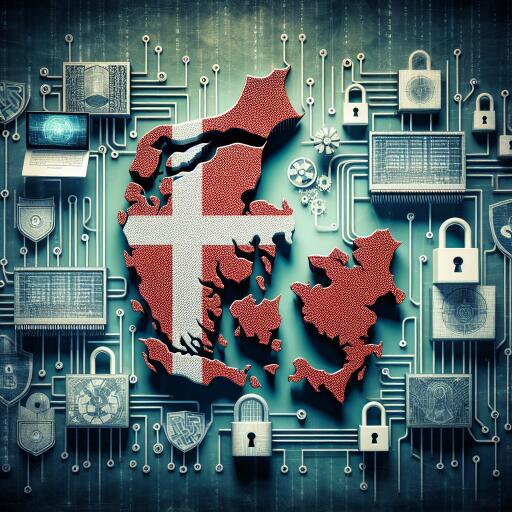Denmark Raises Threat Level for Destructive Cyber Attacks
In a recent press conference held in Torshavn on the Faroe Islands, Danish Defense Minister Troels Lund Poulsen made an announcement that has significant implications for the cyber security landscape not just in Denmark, but potentially across Europe. Amidst the backdrop of the defense ministers’ meeting for the Nordic Defence Cooperation (NORDEFCO) on April 29-30, 2024, an urgent issue was brought to the forefront: the escalating threat of destructive cyber attacks against Denmark.
The NORDEFCO event, a convening of defense ministers from the Nordic countries, was notable this year not just for its picturesque location on the Faroe Islands but for marking a significant pivot in Nordic defense coordination, especially with Finland and Sweden now being members of NATO. Amid discussions on a range of security issues, the Danish Defense Minister’s statement on the cyber threat level was a stark reminder of the invisible battles being fought in the digital domain.
The Danish government has decided to raise the threat level for destructive cyber attacks to level 3 on a 5-level scale. This adjustment reflects an acute awareness of the increasing capabilities and aggressive postures of potential cyber adversaries. It’s a move that Denmark does not take lightly; elevating the threat level is both a recognition of the real and present dangers in the cyber realm and a call to action for the nation’s defenses.
This heightened threat level signals a clear recognition by Danish authorities of the evolving landscape of cyber warfare. Attacks aimed at damaging critical infrastructure, disrupting essential services, or stealing sensitive data are being viewed as more likely now than ever before. The reasons behind this uptick in the threat level could be manifold — ranging from geopolitics to the technological leaps that have equipped malicious actors with more sophisticated tools to execute their attacks.
Denmark’s approach, as outlined by Defense Minister Poulsen, isn’t just about bracing for potential attacks but also about building resilience and enhancing capabilities. This move could entail a slew of measures, including bolstering cyber defenses across critical sectors, enhancing public and private sector partnerships in cyber security, and investing in advanced cyber surveillance and intelligence capabilities to preempt and counter threats.
The announcement made on the Faroe Islands is not isolated but is a part of a broader, coordinated Nordic response to the growing scourge of cyber threats. With Finland and Sweden’s inclusion in NATO underscored at the NORDEFCO meeting, the message is clear: cyber defense is now an integral part of the region’s collective security strategy. This new vision for Nordic defense cooperation is reflective of a changed world — one where digital fortifications are as critical as their physical counterparts.
For Denmark and its Nordic neighbors, the decision to elevate the cyber threat level is a testament to the seriousness with which they view the security of their digital domains. It serves as a clarion call to other nations to not only be vigilant but to actively fortify themselves against the very real danger of cyber warfare.
As the world watches this development, the implications of Denmark’s raised cyber threat level extend beyond its borders. It underscores the necessity for international collaboration in cyber security efforts and highlights the pervasive nature of cyber threats in today’s interconnected world. Denmark’s proactive stance may well serve as a model for other countries grappling with similar threats.
In conclusion, the adjustments made by the Danish government in response to the heightened risk of cyber attacks are a sobering reminder of the evolving challenges in national and international security. As cyber threats become increasingly sophisticated, the need for robust cyber defense mechanisms cannot be overstated. Denmark’s move to raise the threat level is a decisive step towards safeguarding its digital infrastructure, setting a precedent for nations worldwide to follow suit in securing their own cyber realms.










